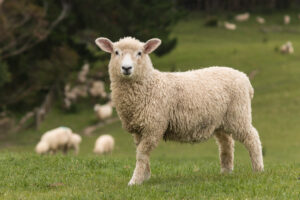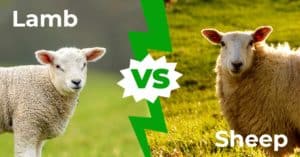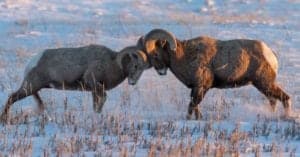The domestic sheep (Ovis aries) is one of the most common livestock animals on the planet. But, just how long is the sheep’s gestation period? Female sheep are known as ewes, while males are rams, and young sheep are lambs.
Sheep have been domesticated for an estimated 10-12,000 years—that’s a long time! All that time, humans have raised sheep for various purposes, including meat and wool. There are still wild varieties of sheep in the world, like the urial, mouflon, Dall sheep, bighorn sheep, and argali.
Here, we’ll learn all there is to know about the domestic sheep, starting with what they look like. We’ll learn what they eat, how they spend their days, and where you can find them. We’ll even take a brief look at the history of the domestic sheep.
Then, we’ll find out how long a sheep’s gestation lasts, and how many babies they have. Finally, we’ll take a look at how often sheep can get pregnant, as well as the animal with the longest pregnancy.
Sheep: The Facts

Healthy sheep need adequate and nutritious food, fresh water, safety, vaccines against diseases, and a clean place to live.
©iStock.com/DejaVu Designs
Before diving into the sheep’s gestation, let’s get to know this incredible animal just a little better.
Sheep: Appearance and Size
There are many varieties of domestic sheep worldwide, each with a different look. But, all sheep have a few things in common. They’re quadrupedal (four-legged) herbivores with excellent senses of vision and hearing. Most have dark heads and legs, and white coats. They grow to just a few feet tall and weigh between 100-220 pounds as adults.
Rams have large, sometimes curved, horns. Some species of sheep are even brown or black. Each variety has a slightly different type of wool. Some sheep are bred to withstand heat, drought, and even high mountain pastures.
Sheep: Diet and Behavior
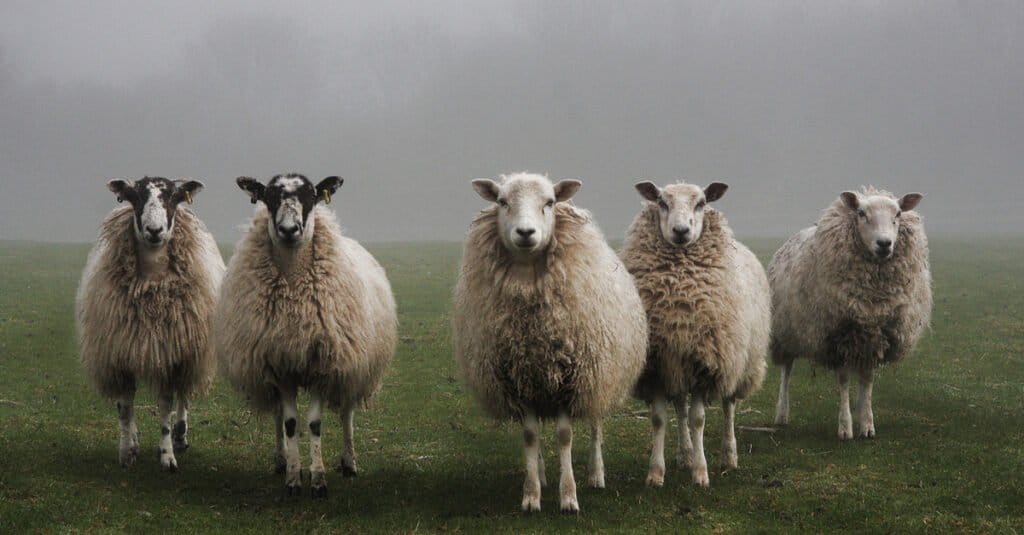
Sheep are ruminants, which means they partially digest their food, regurgitate it, chew it again, and redigest it.
©Paul Steven/Shutterstock.com
Sheep are ruminants, which means they eat tough foods that other animals, like dogs and humans, can’t digest. These typically consist of various grasses, roughage, and forbs. Domestic sheep often eat hay in addition to, or in place of, grasses and forbs.
Sheep are grazers, which means that they spend most of their time, well, grazing. They’re active strictly during the day and often huddle together at night to sleep. Sheep are also flock animals who travel in herds. They’re very social and rely heavily on the dominance hierarchy of their herd to establish appropriate behavior for each individual member. It is this flocking behavior that first made sheep such excellent domestic animals thousands of years ago.
How Many Days are Sheep Pregnant?
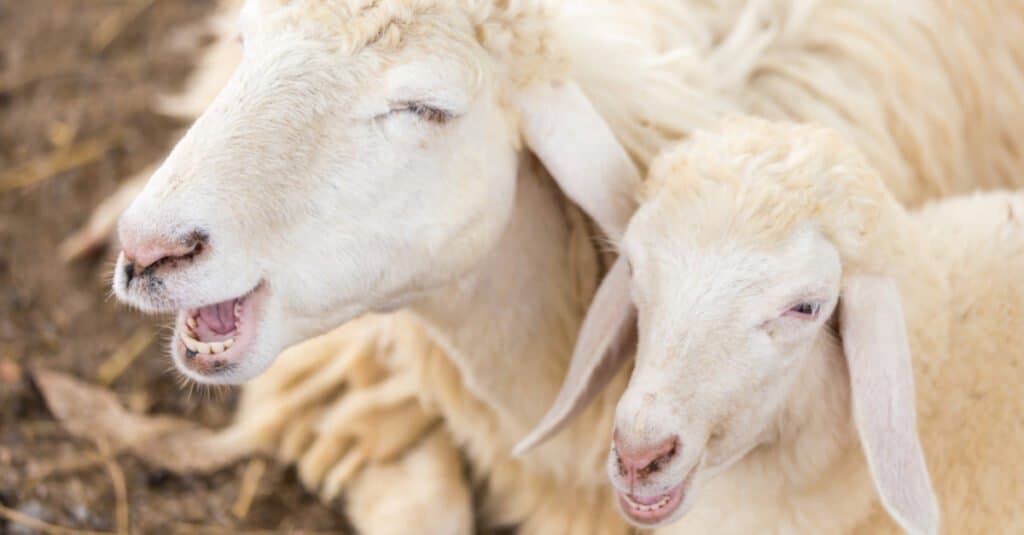
Ewes can be lambed as early as six months of age, though most farmers recommend waiting a bit longer.
©SIWAT_R/Shutterstock.com
Though there are over 200 varieties of domestic sheep around the world, all ewes stay pregnant for about the same length of time. Sheep pregnancies last for approximately 146 days, or right around five months. A normal sheep gestation is between 144-152 days. When a ewe gives birth, it’s known as lambing. Ewes can become pregnant as young as 7 months, though most experts recommend refraining from breeding until they’re at least one year old.
How Many Babies do Sheep Give Birth to?
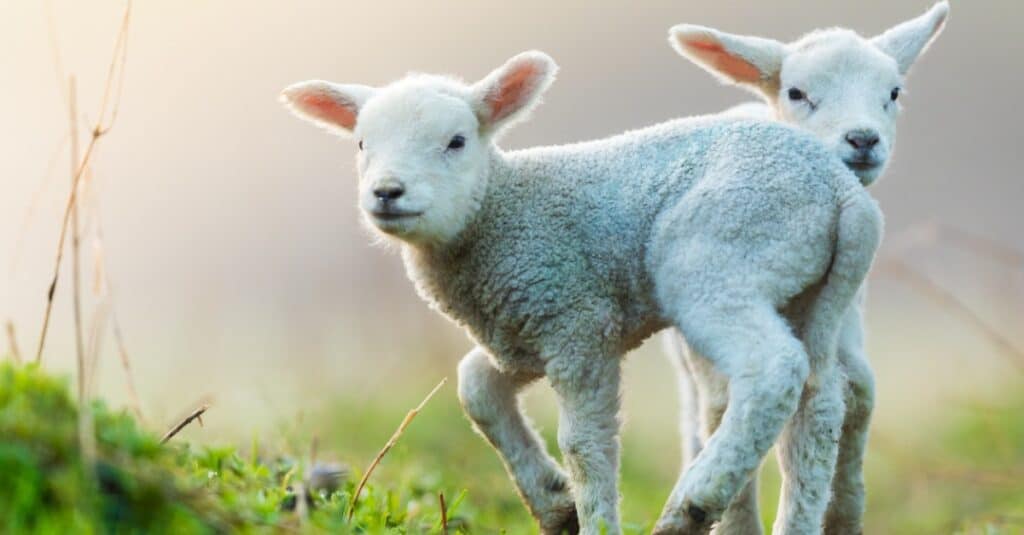
Sheep pregnancies generally result in 1-2 lambs.
©iStock.com/Jag_cz
Because sheep remain fertile throughout the year, a properly cared for, healthy ewe can have up to six lambs every two years. To achieve this fecundity, farmers must keep their sheep well-fed, clean, and healthy. Also, they must keep detailed records of sheep gestation, birth, and age.
How Can You Tell if a Sheep is Pregnant?
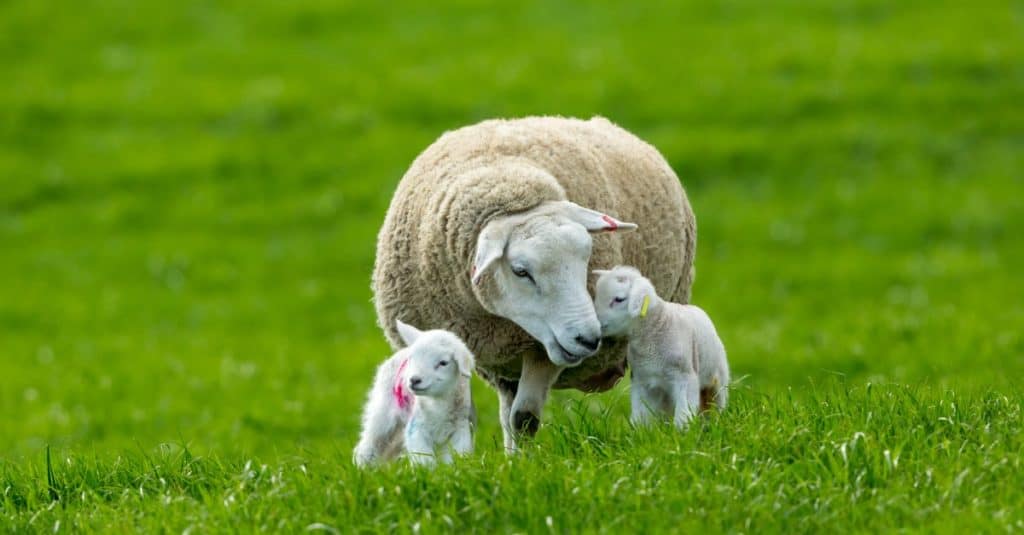
Pregnant ewes need a constant supply of food and water and should be kept in safe, clean pastures away from predators.
©Coatesy/Shutterstock.com
Signs of pregnancy in ewes begin as little as three weeks after insemination. If a ewe becomes pregnant, she will miss her next heat cycle, which should occur around three weeks after she becomes pregnant. She won’t begin to ‘show’ until she’s around 12 weeks (three months) pregnant. So, if a ewe doesn’t go into heat and begins to show, then she’s around 12 weeks into her gestation.
During sheep pregnancy, farmers have to ensure that the ewe remains well fed. To avoid spontaneous abortion of the fetus, she should be kept safe from dog attacks or scary situations, like being separated from her herd. Also, farmers have to be careful of the types of drugs they give pregnant sheep, as some vaccinations or medications could harm the fetus.
How Often Can Sheep Get Pregnant?
Traditionally, farmers lamb ewes once a year, which results in at least one new lamb every year. However, since sheep gestation is only five months, and it only takes three months to wean lambs, some farmers breed their ewes at shorter intervals. This is known as accelerated lambing, and in the world of sheep farming, it’s controversial at best. Most farmers recommend not weaning lambs early and prefer to keep their ewes healthy by giving them time to recuperate in between pregnancies.
What Animal Has the Longest Gestation?
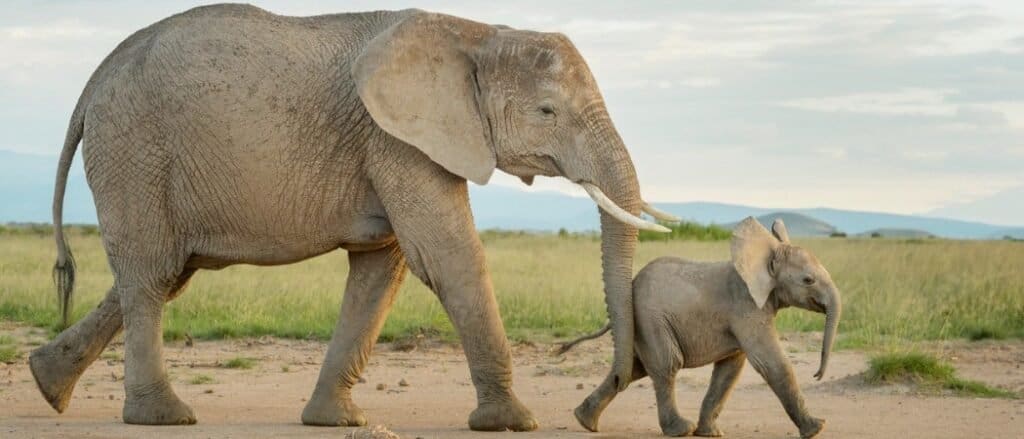
It’s no surprise that one of the largest land mammals on the planet also has the longest gestation of all.
©iStock.com/AndreAnita
Five months for a sheep’s pregnancy might not seem like that long, but imagine being pregnant for 22 months! That’s the length of time it takes the African elephant to gestate a calf. Elephants have a much longer gestation than sheep for a couple of reasons.
First, they’re much bigger than sheep. Secondly, it takes a long time to develop those oversized elephant brains. A single sheep can produce up to six lambs in the time it takes an African elephant to gestate one calf.
The photo featured at the top of this post is © Vasilyev Alexandr/Shutterstock.com
Thank you for reading! Have some feedback for us? Contact the AZ Animals editorial team.




